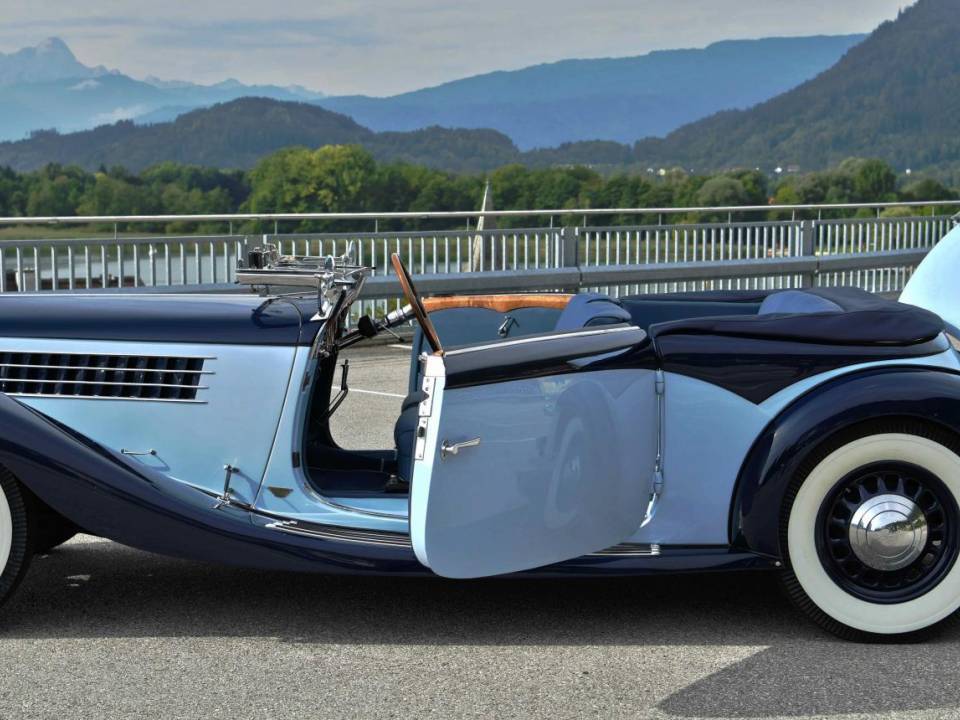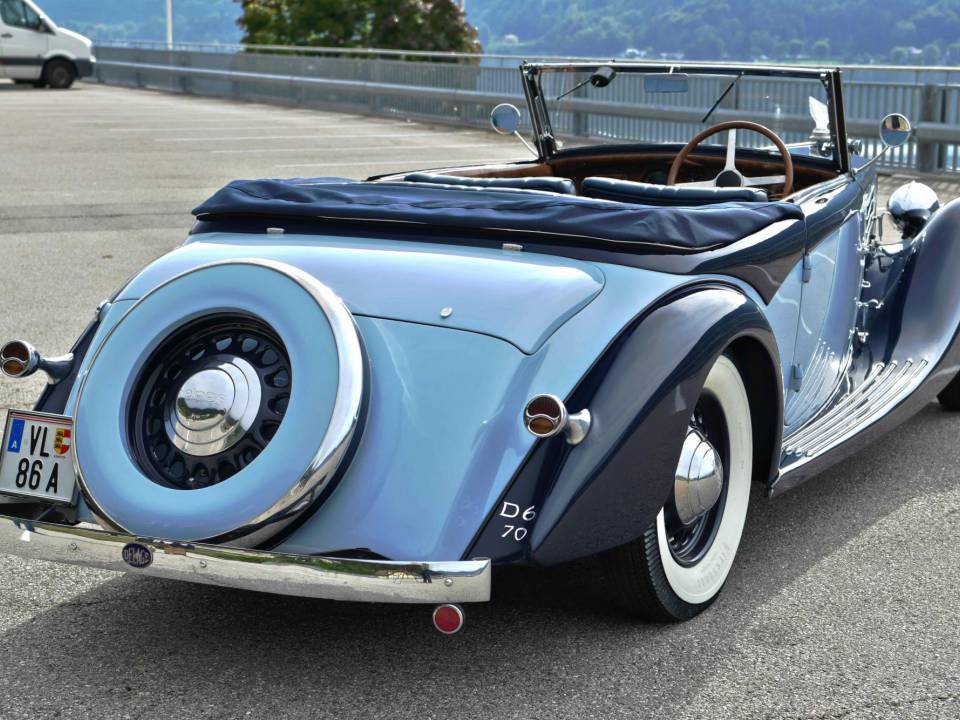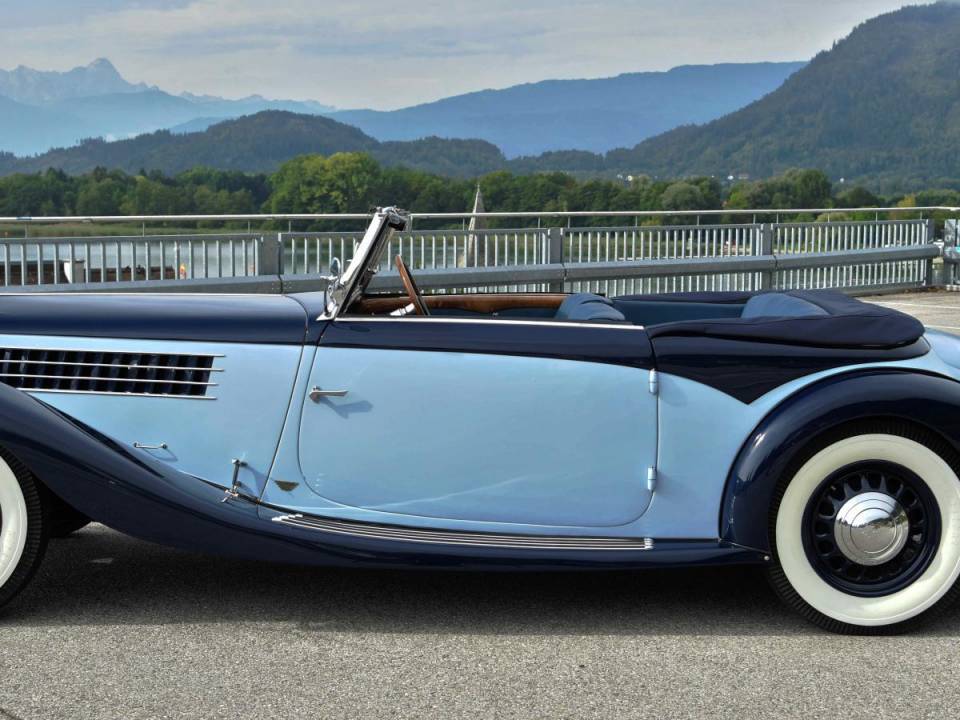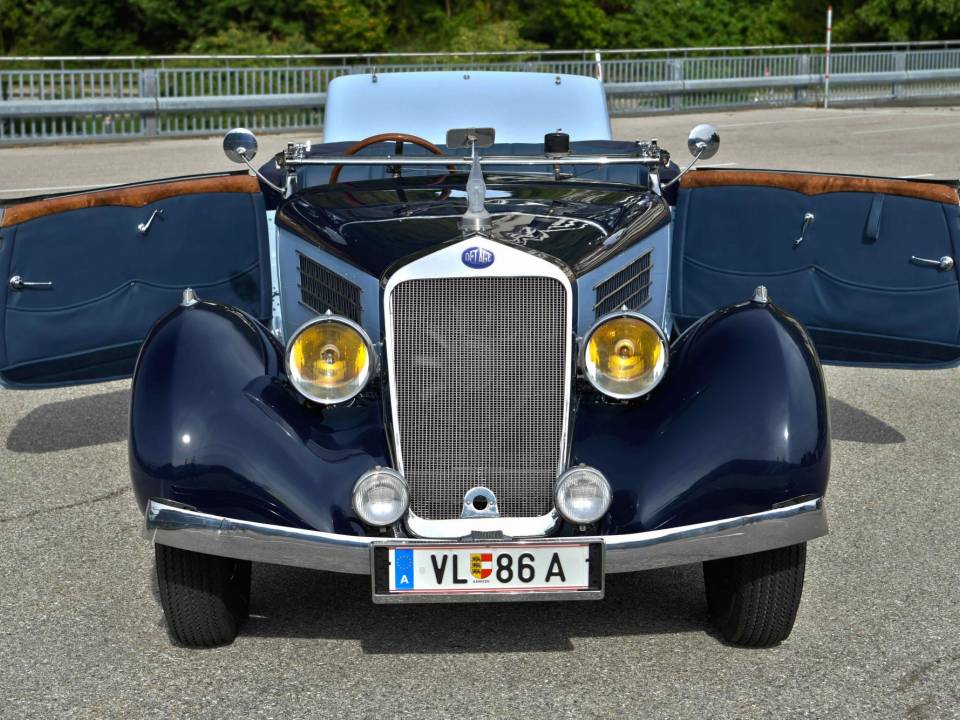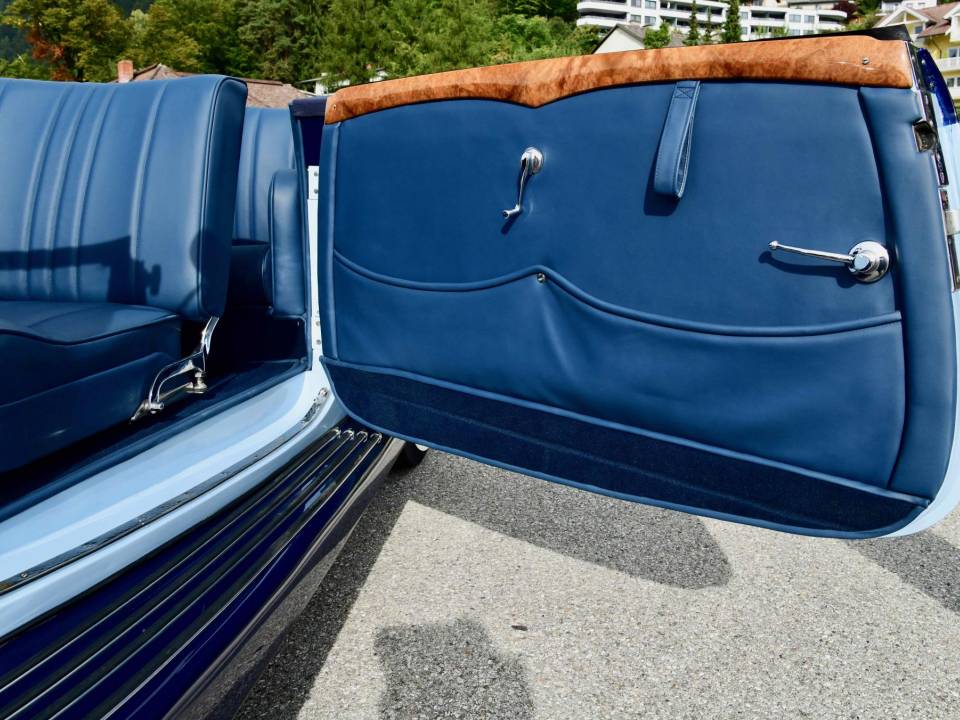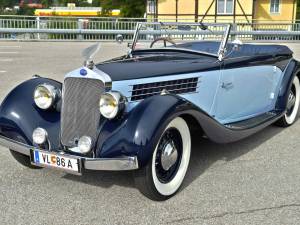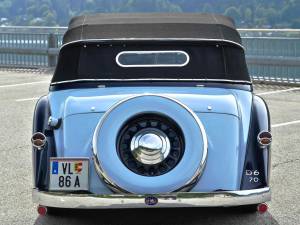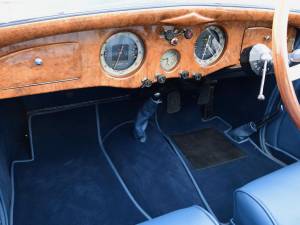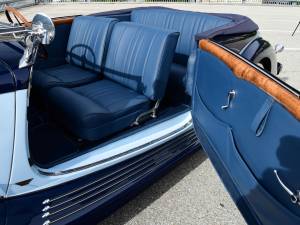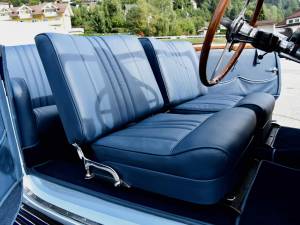1936 | Delage D6-70 Figoni & Falaschi
Descripción
1936 Delage D6-70 B Millord Cabriolet by Figoni & Falaschi
Chassis Number: 50714
Registration Number: VL86A (Austrian) UXS331 (UK)
Engine Number: 50714
After Delahaye merged with Delage in 1935, both Louis Delage and his own technical office remained largely autonomous. Using the Delahaye bank of parts, as required by their agreement, they modified and precisely prepared the forthcoming new model, the D6-70. By contract, it had been decided that neither Delage nor Delahaye would produce cars of the same engine capacity, so Louis Delage used the Delahaye 135 engine and modified it by decreasing it to 2,729 cc and 16 taxable horsepower. In doing so, the engine gained a shorter stroke, which combined with a modified head, gave the new Delage’s engine a lot more vivacity compared with its sister Delahaye 135.
Again, borrowing from the Delahaye parts bin, Louis Delage and talented engineer Arthur Michelat chose the type 134 chassis, which was much lighter than that from the 135, although just as stiff. In trying to prepare the best car possible in the spirit of competition, and with the aim of demonstrating their technical skills to the technical office of Delahaye and Delage, Michelat prepared this frame such that it could be fitted with Houdaille shock absorbers in place of the quite outdated friction shocks fitted to the 135.
Also of much interest was the fact that only the Delage was fitted with modern hydraulic Bendix brakes; the Delahaye range would retain the aged mechanical system until the outbreak of World War II. Louis Delage, a perfectionist himself, wanted his engines to look better than the Delahaye units and had them fitted with both cam and lateral pushrod covers made of aluminum, as opposed to the iron covers of the Delahaye engines.
Most of the D6-70s were equipped with the optional Cotal electromagnetic gearbox, an almost automatic transmission system with four speeds plus reverse. At a time when most transmissions needed a double de-clutch and to be easily cracked when down shifting, the Cotal system, with its silky smooth operation, was a huge improvement over any other concurrent design.
This Delage is powered by a 90 bhp, 2729 cc six-cylinder engine with inverted Solex carburetor, Cotal four-speed manual transmission, independent front suspension and live rear axle with transverse leaf springs front and rear, and four-wheel hydraulic drum brakes. On the road she drives beautifully and simply wafts along the road. Everything about the drive of this Delage screams post-war quality, the road handling is excellent, the gearbox is smooth and effortless, and the engine has more than enough torque to send you cruising along at speed.
We received this D6 fresh from the coachbuilders after having a meticulous restoration carried out. The body is finished in a beautiful 2-tone blue which looks simply mesmerising as you see it dive towards you, the quality is excellent with the fresh paint being completely unmarked. At the same time the interior was completely re-trimmed in a blue hide, with fluted leather to the seats and beautifully shaped door pockets. Likewise the walnut dash & door tops are mirror finished & beautifully figured.
The look of this Delage from every angle is simply breath taking, its easy to see why Figoni & Falaschi are know as one of, or the best Coachbuilders, however there is one feature they can not be credited for, the magnificent Lalique mascot that simply accentuates the styling as you look at the front of the car.
The car offered follows design study number 7675, as illustrated by a centerfold in Delage, Styling and Design, by Richard Adatto, and was given body number 557, which it still bears on different chrome plated fairings. This design is of sheer elegance and shows the car in three different configurations, namely with the top up and down, as a cabriolet, and with the “Milord,” or half-cabriolet, setup, which gives this example a specific touch of class so well-crafted by the French school of the 1930s. For low speed motoring around town on a balmy evening the Windshield may be folded horizontal giving the car a very very rakish look.
This D6 is one of only four cars built with a disappearing hood design and one of only 2 remaining.
The artistic way Joseph Figoni penned this Delage’s sketch shows the innovative and slender line that cuts the side of the car, which made his design a standout next to the other renderings of the time, and is representative of Figoni et Falaschi’s signature of innovation and elegance, which made their workshop world-famous in a short period of time. Also of great impact is the fact that this Delage was equipped with an optional folding windscreen, which adds versatility and, moreover, brings that magnificent touch of sport and freedom, which is evocative of a sunset drive along a winding shoreline road.
The late-1930s masterpieces by Figoni et Falaschi seldom come to the market; this car, in beautifully restored condition, will for sure attract intense attention wherever it appears. It would of course be welcomed at either Pebble Beach or the Villa D'Este Concouvrs.
The car is supplied with both European & UK papers.
Detalles del vehículo
Datos del vehículo
- Marca
- Delage
- Serie del modelo
- D6
- Modelo
- D6-70 Figoni & Falaschi
- Código fabricante
- D6-70
- Primera fecha de registro
- No provisto
- Año de construcción
- 1936
- Kilometraje (leer)
- Número de chasis
- 50714
- Número de motor
- No provisto
- Número de la caja de cambios
- No provisto
- Coincidencia de números
- No provisto
- Número de propietarios
- No provisto
Detalles técnicos
- Carrocería
- Convertible
- Potencia (kW/CV)
- 66/90
- Capacidad cúbica (cm³)
- 2729
- Cilindro
- 6
- Puertas
- 2
- Manejo
- Derecha
- Caja de cambios
- Manual
- Marchas
- 4
- Engranaje
- Trasero
- Freno delantero
- No provisto
- Freno trasero
- No provisto
- Combustible
- Gasolina
Configuración individual
- Color exterior
- Otros
- Color según fabricante
- -
- Color interior
- Otros
- Material interior
- Otros
Equipamiento opcional
- Rechtslenker
Condición, registro y documentación.
- Tiene peritaje
- Condición
- Informe de inspección del libro
- Matriculado
- Listo para conducir
Ubicación

Vintage & Prestige Fine Motor Cars
Richard Biddulph
Globe Industrial Estate 9
RM17 6ST Grays
🇬🇧 Reino Unido

